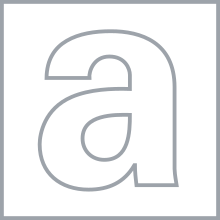
Back A-level Czech TAG Safon Uwch Welsh Advanced Level German Advanced Level Spanish Advanced Level Finnish A-level French A-Level ID Advanced Level Italian 一般教育修了上級レベル Japanese GCE Advanced Level Korean
 An old GCE Advanced Level logo historically used by Cambridge International Education | |
| Acronym | A-level |
|---|---|
| Type | General Certificate of Education |
| Year started | 1951 |
| Duration | 2 years |
| Languages | English language, Welsh language |
| Prerequisites | Typically General Certificate of Secondary Education |
The A-level (Advanced Level) is a subject-based qualification conferred as part of the General Certificate of Education, as well as a school leaving qualification offered by the educational bodies in the United Kingdom and the educational authorities of British Crown dependencies to students completing secondary or pre-university education.[1] They were introduced in England and Wales in 1951 to replace the Higher School Certificate. The A-level permits students to have potential access to a chosen university they applied to with UCAS points. They could be accepted into it should they meet the requirements of the university.[2][3]
A number of Commonwealth countries have developed qualifications with the same name as and a similar format to the British A-levels.[4][5][6] Obtaining an A-level, or equivalent qualifications, is generally required across the board for university entrance, with universities granting offers based on grades achieved.[7] Particularly in Singapore, its A-level examinations have been regarded as being much more challenging than those in the United Kingdom and Hong Kong.[8][9]
A-levels are typically worked towards over two years. Normally, students take three or four A-level courses in their first year of sixth form, and most taking four cut back to three in their second year.[10][11][12][7] This is because university offers are normally based on three A-level grades, and taking a fourth can have an impact on grades. Unlike other level-3 qualifications, such as the International Baccalaureate, A-levels have no specific subject requirements, so students have the opportunity to combine any subjects they wish to take. However, students normally pick their courses based on the degree they wish to pursue at university: most degrees require specific A-levels for entry.[13]
In legacy modular courses (last assessment Summer 2019), A-levels are split into two parts, with students within their first year of study pursuing an Advanced Subsidiary qualification, commonly referred to as an AS or AS-level, which can either serve as an independent qualification or contribute 40% of the marks towards a full A-level award. The second part is known as an A2 or A2-level, which is generally more in-depth and academically rigorous than the AS. The AS and A2 marks are combined for a full A-level award. The A2-level is not a qualification on its own and must be accompanied by an AS-level in the same subject for certification.[14]
A-level exams is a matriculation examination and can be compared to matura, the Abitur or the Baccalauréat.
- ^ "A level definition and meaning". Collins English Dictionary. Retrieved 10 February 2019.
- ^ "University Clearing through UCAS". GOV.UK. Retrieved 17 December 2023.
- ^ Students, Office for (6 April 2022). "Schools, attainment and the role of higher education - Office for Students". www.officeforstudents.org.uk. Retrieved 24 September 2023.
- ^ "Zimbabwe Health & Education". 15 October 2015. Archived from the original on 15 October 2015. Retrieved 10 February 2019.
- ^ "Zimbabwean students celebrate their outstanding exam performance". cambridgeinternational.org. Retrieved 10 February 2019.
- ^ "Mauritius". cambridgeinternational.org. Retrieved 10 February 2019.
- ^ a b "A levels". UCAS. 21 October 2014. Retrieved 10 February 2019.
- ^ "SEAB – About GCE A-Level". seab.gov.sg. Retrieved 10 February 2019.
- ^ Cite error: The named reference
SGAwas invoked but never defined (see the help page). - ^ "Schools Parents – AS and A levels". BBC. Retrieved 10 February 2019.
- ^ gversion.com (14 December 2017). "How to Choose the Right A-levels: a Guide for GCSE Students". Oxford Summer School from Oxford Royale Academy. Retrieved 10 February 2019.
- ^ Naden, Gavan (5 September 2014). "After AS levels: which subjects should students drop?". The Guardian. ISSN 0261-3077. Retrieved 10 February 2019.
- ^ "University courses requiring specific A Level subjects or grades". thecompleteuniversityguide.co.uk. Retrieved 10 February 2019.
- ^ "GCSE, AS and A level reforms". GOV.UK. 23 August 2018. Retrieved 29 September 2021.